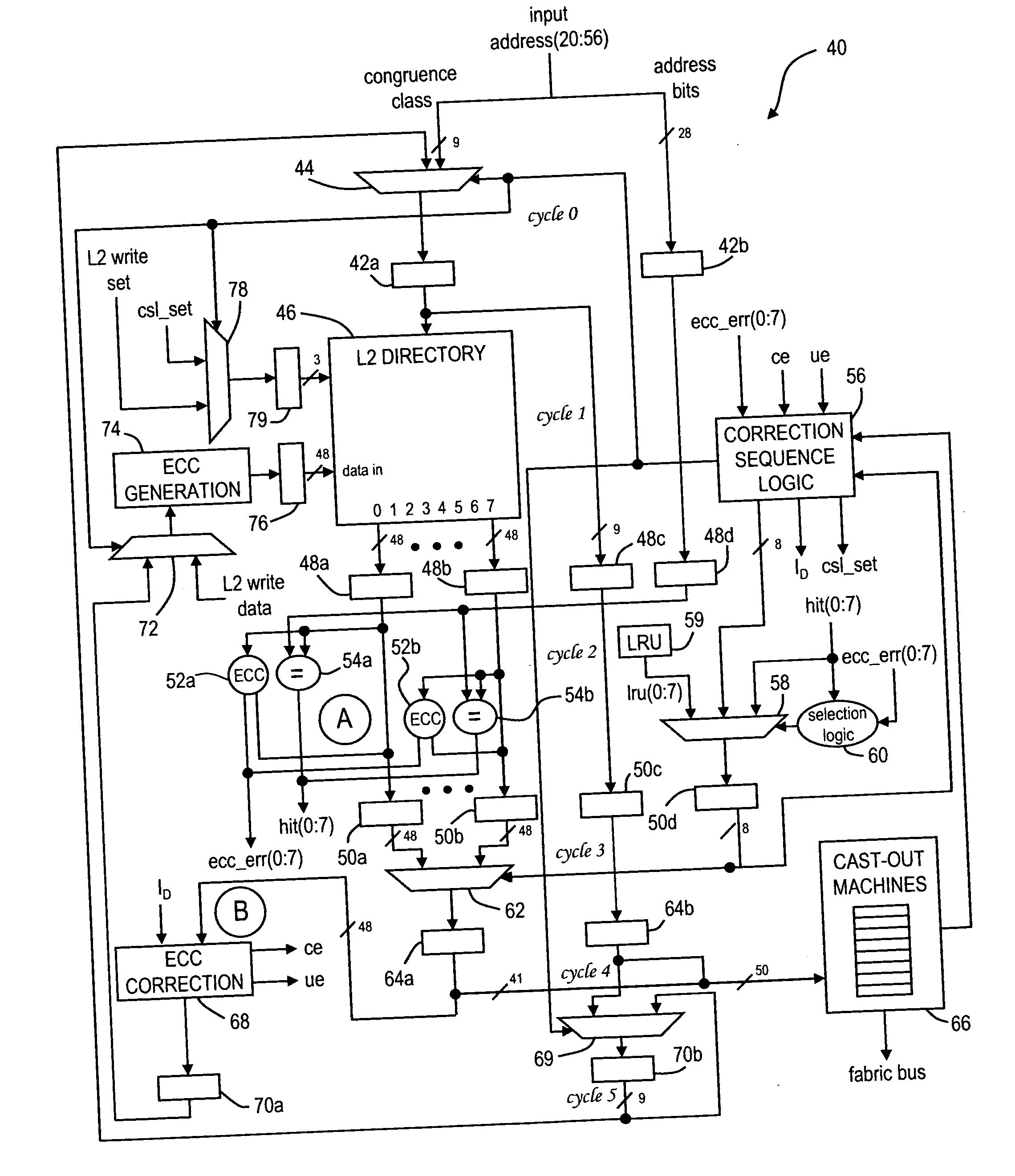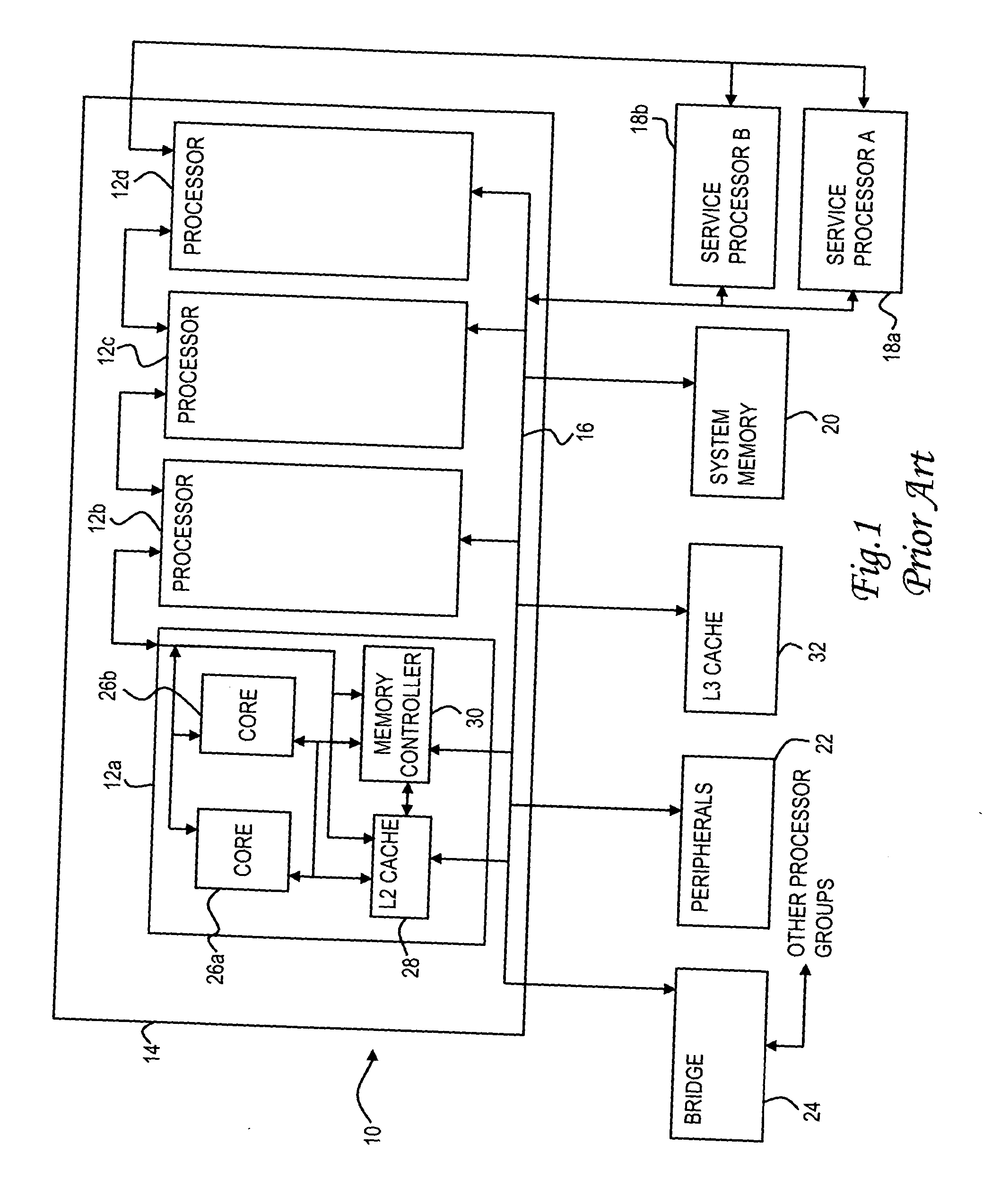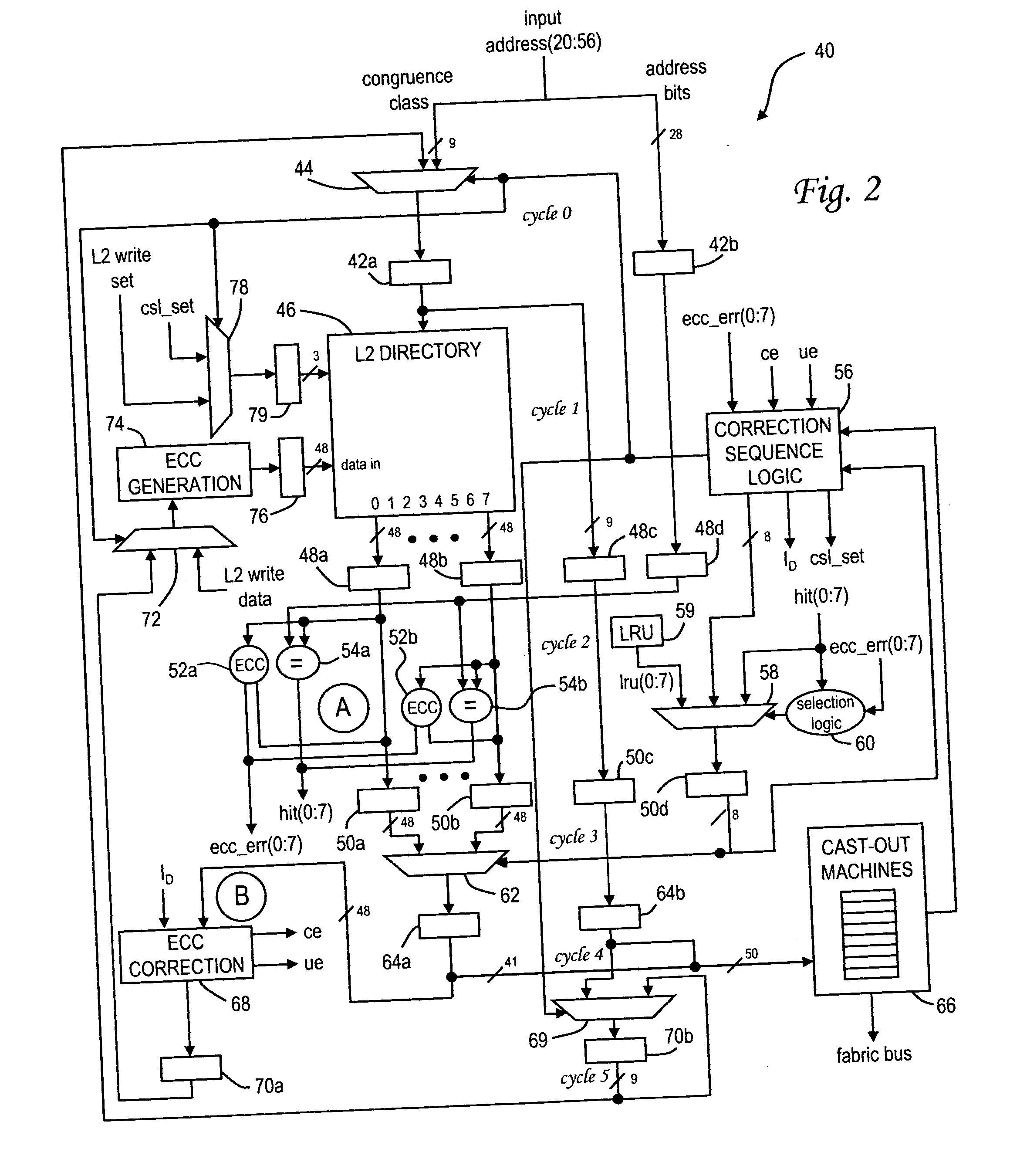Fault tolerant encoding of directory states for stuck bits
a directory state and encoding technology, applied in error detection/correction, instruments, computing, etc., can solve problems such as inability to determine the proper data stream, eccs cannot be used to detect double-bit errors, and given cache blocks may contain incorrect values
- Summary
- Abstract
- Description
- Claims
- Application Information
AI Technical Summary
Benefits of technology
Problems solved by technology
Method used
Image
Examples
Embodiment Construction
)
[0030] The present invention is directed to an improved method for handling a stuck bit (hard fault) in a cache directory that renders a member of the cache directory permanently defective. According to this novel method and as further explained below, any valid memory block corresponding to the defective member is corrected as it is moved out of the affected cache, and the directory member is marked as being defective so that it is no longer used in future cache operations. In this manner, the invention protects the integrity of all program instructions and operand data residing in the cache while disabling future use of the faulty directory member location. The method can be carried out as needed during normal operation of the cache memory and so is particularly useful in handling stuck bits that arise in the field, after factory testing or system boot up.
[0031] With reference now to the figures, and in particular with reference to FIG. 2, there is depicted a cache directory 40 ...
PUM
 Login to View More
Login to View More Abstract
Description
Claims
Application Information
 Login to View More
Login to View More - R&D
- Intellectual Property
- Life Sciences
- Materials
- Tech Scout
- Unparalleled Data Quality
- Higher Quality Content
- 60% Fewer Hallucinations
Browse by: Latest US Patents, China's latest patents, Technical Efficacy Thesaurus, Application Domain, Technology Topic, Popular Technical Reports.
© 2025 PatSnap. All rights reserved.Legal|Privacy policy|Modern Slavery Act Transparency Statement|Sitemap|About US| Contact US: help@patsnap.com



